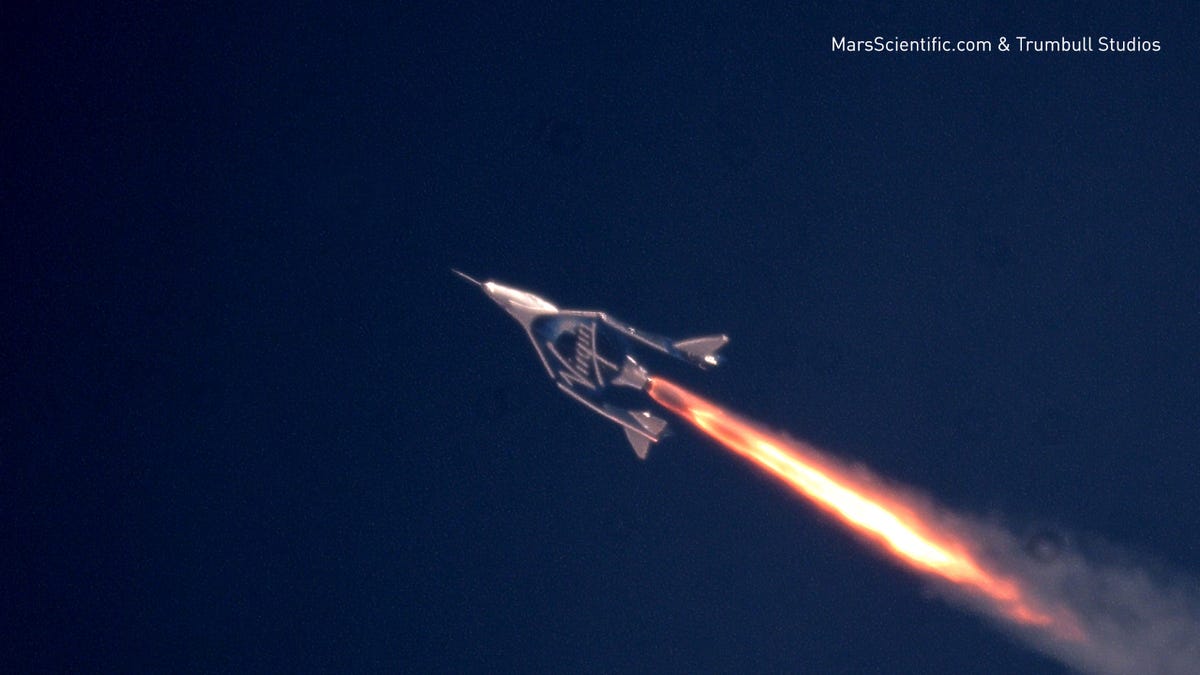Virgin Galactic's Unity space plane breaks new speed record
Flying faster and higher than ever before on its third test flight, Richard Branson's space plane soars closer to beginning passenger flights.

The VSS unity gets a rocket-powered boost to a new altitude and speed.
If you aren't a military pilot, your chances of breaking the sound barrier on a supersonic flight are pretty much nonexistent these days.
But Richard Branson may change not just that, but carry civilians into space, as well. On Thursday, his Virgin Galactic venture moved a little closer to that dream with the third successful test flight of its VMS Unity space plane.
Touch down. Another successful test flight for VSS Unity. Congratulations to our pilots Dave Mackay and Mike 'Sooch' Masucci #SpaceshipTwo
— Virgin Galactic (@virgingalactic) July 26, 2018
After being released from the VMS Eve carrier aircraft at 46,500 feet over California's Mojave Desert, the rocket-powered Unity climbed almost vertically to an altitude of 170,800 feet. It was the first time Unity has reached the Mesosphere, a layer of the Earth's atmosphere above the range of traditional aircraft and balloon flight.
After burning the rocket for 42 seconds, pilots Dave Mackay and Mike "Sooch" Masucci also pushed the Unity to a top speed of Mach 2.47, or almost two and half times the speed of sound. By comparison, Concorde's top speed was Mach 2.02.
"The flight was exciting and frankly beautiful," Masucci said. "We were able to complete a large number of test points which will give us good insight as we progress to our goal of commercial service."
Virgin resumed its passenger spaceflight program in April, three and a half years after the fatal crash of Virgin Galactic's SpaceShipTwo. During a second Unity test flight the next month, the space plane reached an altitude of 114,500 feet and a speed of Mach 1.9.

